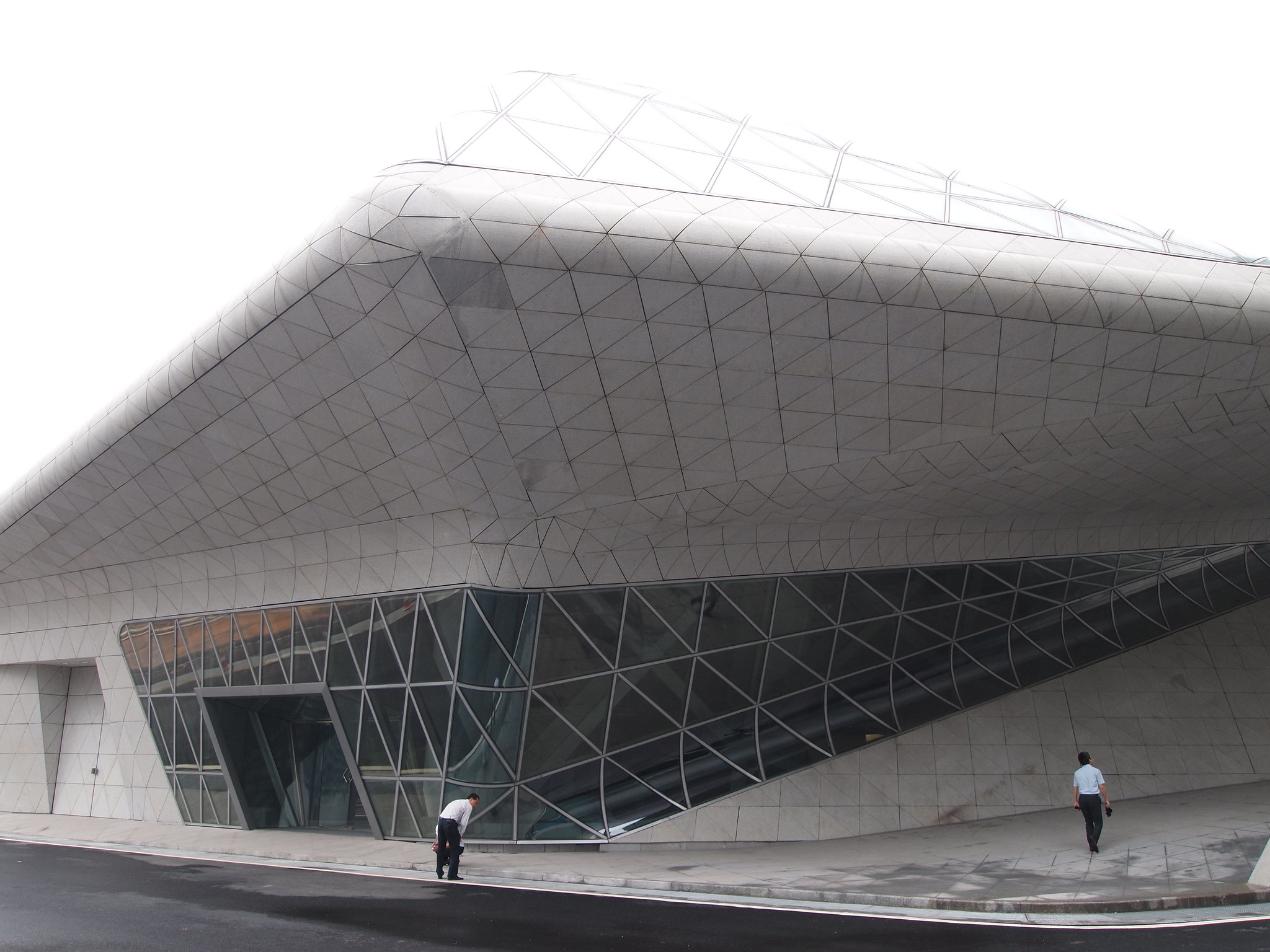The Guangzhou Opera House is a landmark cultural venue located in Guangzhou, China. Designed by renowned architect Zaha Hadid, the opera house opened in 2010 and has since become an iconic symbol of the city’s modern architecture and artistic ambitions. The building’s striking design features a pair of smooth-edged structures resembling two pebbles on the bank of the Pearl River. With its cutting-edge acoustics and state-of-the-art facilities, the opera house hosts a wide range of performances, including opera, ballet, and concerts. The main auditorium seats 1,800 people, while a smaller, multipurpose hall accommodates up to 400. The Guangzhou Opera House has played a significant role in elevating the city’s cultural status and attracting world-class performances to the region.
Guangzhou Opera House stands as a testament to the visionary genius of Zaha Hadid, the Iraqi-British architect who revolutionized modern architecture with her bold, fluid designs. Nestled along the Pearl River in Guangzhou, China, this architectural marvel has become an iconic landmark since its completion in 2010, captivating visitors with its striking silhouette and innovative structure.
At first glance, the opera house appears to defy conventional architectural norms. Its asymmetrical form, reminiscent of two smooth pebbles washed ashore, seems to float effortlessly above the ground. This organic design was inspired by the natural erosion of river valleys, reflecting Hadid’s signature style of blending nature with cutting-edge technology.
The building’s exterior is a mesmerizing tapestry of triangular panels, crafted from glass and granite. These panels create a dynamic interplay of light and shadow, constantly changing the opera house’s appearance throughout the day. As the sun moves across the sky, the building seems to come alive, its surfaces shimmering and shifting like the nearby river’s waters.
Stepping inside the Guangzhou Opera House is like entering another world. The cavernous main auditorium, with its 1,800 seats, is a masterpiece of acoustics and aesthetics. The undulating walls and ceiling, adorned with thousands of LED lights, create an immersive environment that enhances the theatrical experience. It’s not just about watching a performance; it’s about being enveloped by it.
But the opera house is more than just a venue for performances. It’s a cultural hub that has transformed Guangzhou’s artistic landscape. The complex includes a multifunction hall, rehearsal rooms, and an exhibition space, making it a versatile center for various forms of artistic expression. This multifaceted approach has helped revitalize the surrounding area, turning it into a vibrant district that attracts both locals and tourists alike.
The construction of the Guangzhou Opera House was no small feat. It took five years to complete, with numerous challenges along the way. The complex geometry of Hadid’s design pushed the boundaries of what was possible in architecture and engineering. Advanced computer modeling and innovative construction techniques were employed to bring her vision to life. The result is a building that not only looks futuristic but also incorporates state-of-the-art technology in its operations.
One of the most remarkable aspects of the opera house is its environmental consciousness. Despite its grand scale, the building incorporates numerous sustainable features. The use of natural light is maximized through strategic placement of windows and skylights, reducing the need for artificial lighting. The building’s orientation and design also help regulate temperature, minimizing energy consumption for heating and cooling.
The Guangzhou Opera House has become more than just a cultural landmark; it’s a symbol of China’s rapid modernization and its ambition to become a global leader in architecture and the arts. It has put Guangzhou on the map as a destination for architecture enthusiasts and opera lovers alike, drawing visitors from around the world.
Zaha Hadid’s creation continues to inspire and challenge our perceptions of what architecture can be. It stands as a lasting tribute to her legacy, pushing the boundaries of design and reminding us that buildings can be more than just functional spaces – they can be works of art that enrich our lives and transform our cities.
As we look to the future of architecture, the Guangzhou Opera House serves as a beacon of innovation and creativity. It shows us that with vision, skill, and daring, we can create spaces that not only serve their purpose but also elevate our spirits and ignite our imaginations. In a world that’s constantly changing, this architectural marvel reminds us of the enduring power of human ingenuity and artistic expression.
The Guangzhou Opera House stands as a testament to innovative architectural design and cultural significance in modern China. Designed by Zaha Hadid, the structure’s fluid, organic forms and cutting-edge technology have made it an iconic landmark in Guangzhou’s skyline. Since its opening in 2010, the opera house has played a crucial role in promoting performing arts and attracting world-class productions to the region. Its unique design, inspired by river pebbles, not only showcases architectural brilliance but also symbolizes the city’s connection to its natural surroundings. The Guangzhou Opera House has successfully bridged traditional Chinese culture with contemporary artistic expression, cementing its position as a vital cultural institution and architectural marvel in southern China.

